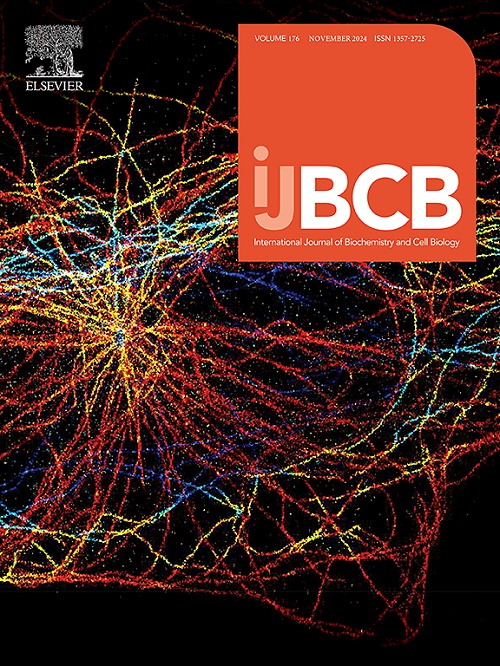miR-21对miR-17-92a集群的潜在调控
IF 2.8
3区 生物学
Q2 BIOCHEMISTRY & MOLECULAR BIOLOGY
International Journal of Biochemistry & Cell Biology
Pub Date : 2024-11-28
DOI:10.1016/j.biocel.2024.106705
引用次数: 0
摘要
MicroRNAs (miRNA,miRs)是一种小的非编码rna,在所有哺乳动物细胞中普遍表达。它们的主要功能是通过直接结合靶标上的区域来调节新生RNA转录物。现在有令人兴奋的数据表明,这些mirna可以与其他mirna结合,这可能对疾病状态的基因调控产生更广泛的影响。oncomiR miR-21是癌细胞中表达最高的mirna之一,在本研究中,我们描述了哪些mirna可能是miR-21的潜在靶点。在用miR-21模拟物递送的癌细胞中,miRNA环境发生了可观察到的变化。我们证明含有六个miRNA成员的miR-17-92a集群可能是miR-21调控的靶标。此外,miR-17-92a的初级转录本在miR-21存在下减少。在miR:miR调控的更广泛背景下,miR-21的过表达改变了150多种mirna的表达,包括那些已知在癌症通路中调节基因的mirna,如MAPK信号传导和FoxO通路。本研究扩展了我们对miR:miR调控网络的有限理解,并强化了mirna可以相互调控的概念,从而影响更广泛的基因网络。本文章由计算机程序翻译,如有差异,请以英文原文为准。
The potential regulation of the miR-17–92a cluster by miR-21
MicroRNAs (miRNA,miRs) are small noncoding RNAs that are ubiquitously expressed in all mammalian cells. Their primary function is the regulation of nascent RNA transcripts by direct binding to regions on the target. There is now exciting data to suggest that these miRNAs can bind to other miRNAs, and this may have a broader impact on gene regulation in disease states. The oncomiR miR-21 is one of the highest-expressing miRNAs in cancer cells, and in this study, we characterise which miRNAs could be potential targets of miR-21. In cancer cells delivered with a miR-21 mimic, there was an observable shift of the miRNA milieu. We demonstrate that the miR-17–92a cluster, which harbours six miRNA members, may be a target for miR-21 regulation. Additionally, the primary transcript of miR-17–92a was reduced in the presence of miR-21. In the broader context of miR:miR regulation, overexpression of miR-21 shifted the expression of more than 150 miRNAs, including those known to regulate genes in cancer pathways such as the MAPK signalling and FoxO pathways. This study expands upon our limited understanding of miR:miR regulatory network and reinforces the concept that miRNAs can regulate each other, thereby influencing broader gene networks.
求助全文
通过发布文献求助,成功后即可免费获取论文全文。
去求助
来源期刊
CiteScore
8.10
自引率
0.00%
发文量
124
审稿时长
19 days
期刊介绍:
IJBCB publishes original research articles, invited reviews and in-focus articles in all areas of cell and molecular biology and biomedical research.
Topics of interest include, but are not limited to:
-Mechanistic studies of cells, cell organelles, sub-cellular molecular pathways and metabolism
-Novel insights into disease pathogenesis
-Nanotechnology with implication to biological and medical processes
-Genomics and bioinformatics

 求助内容:
求助内容: 应助结果提醒方式:
应助结果提醒方式:


